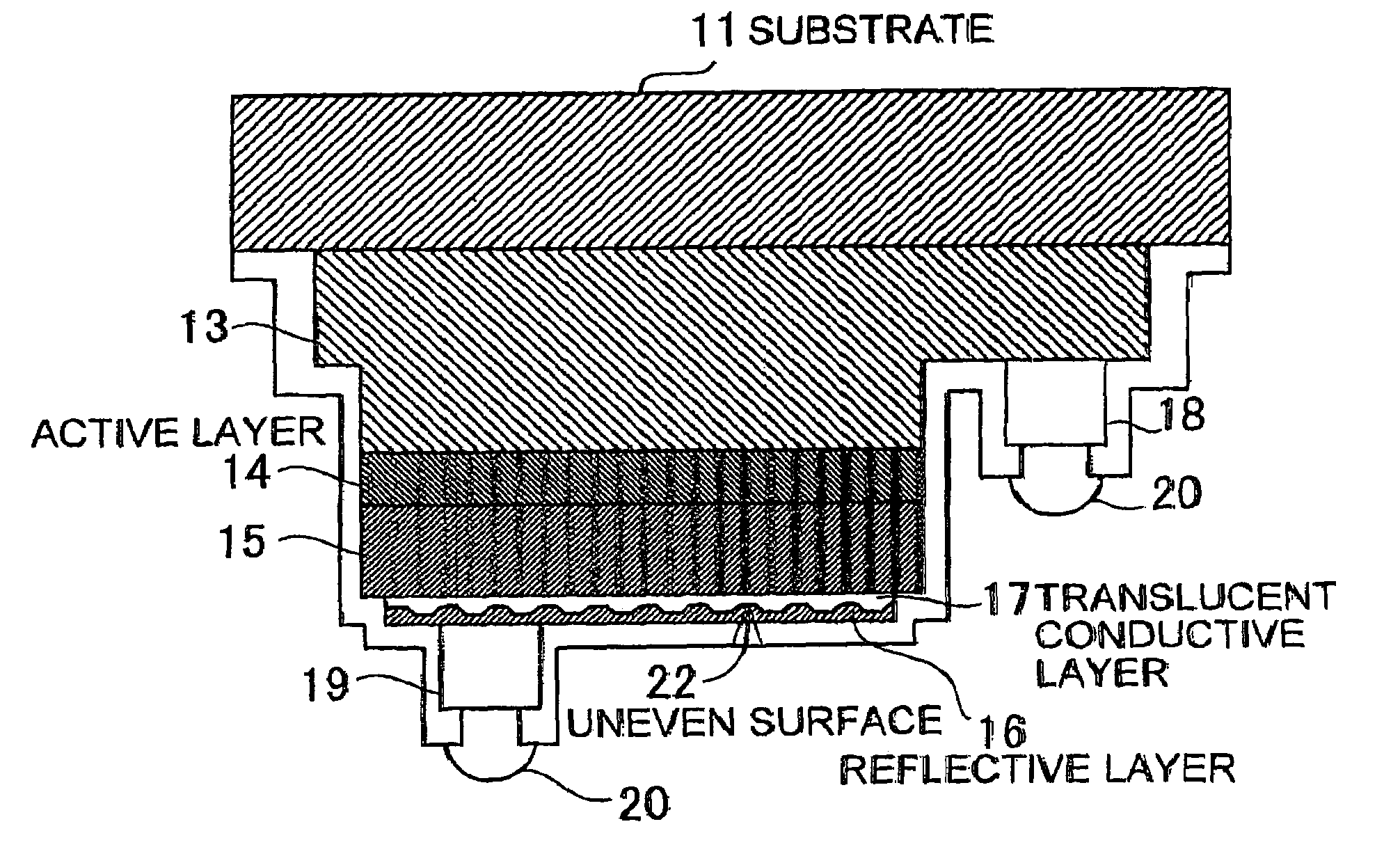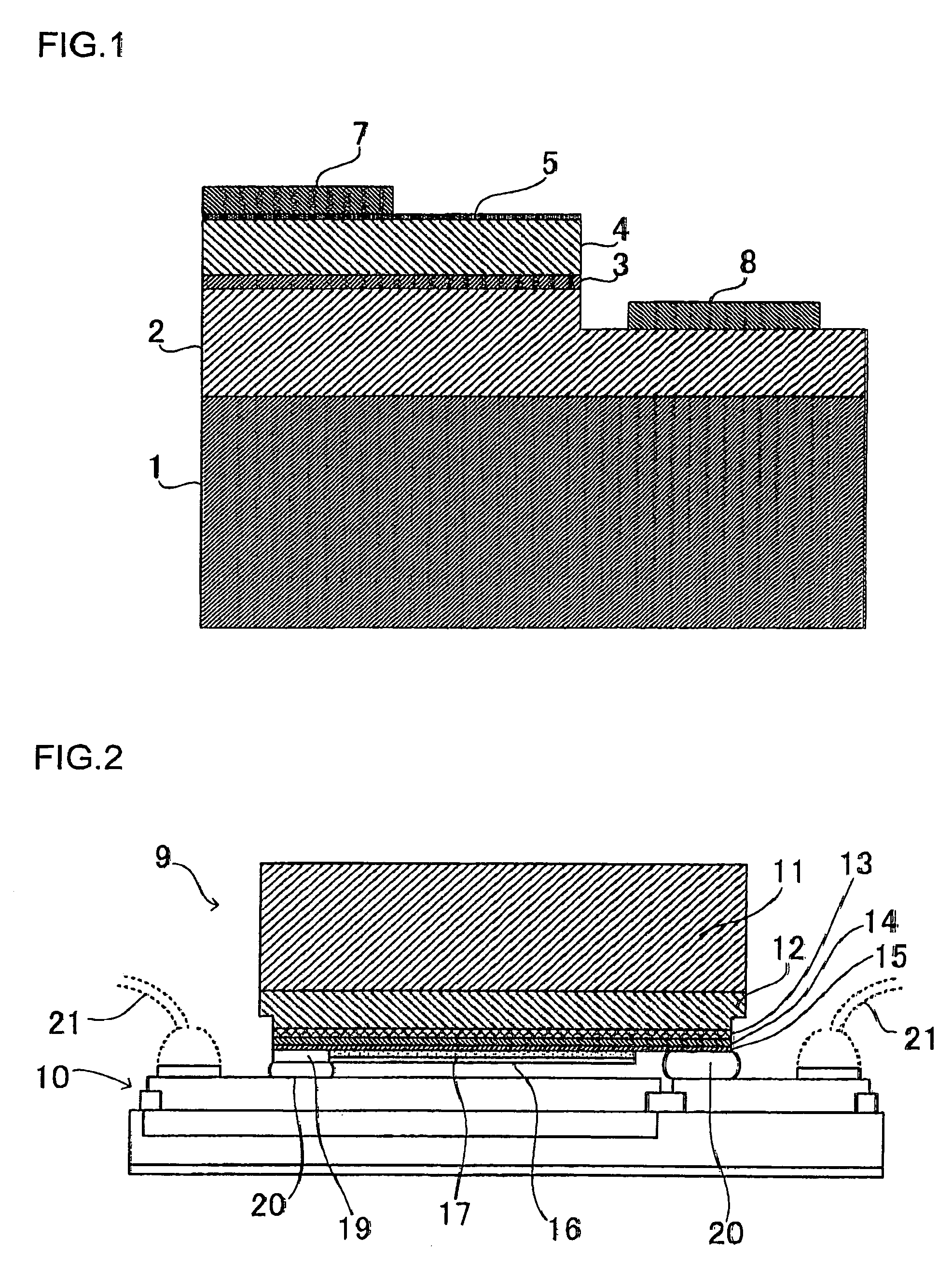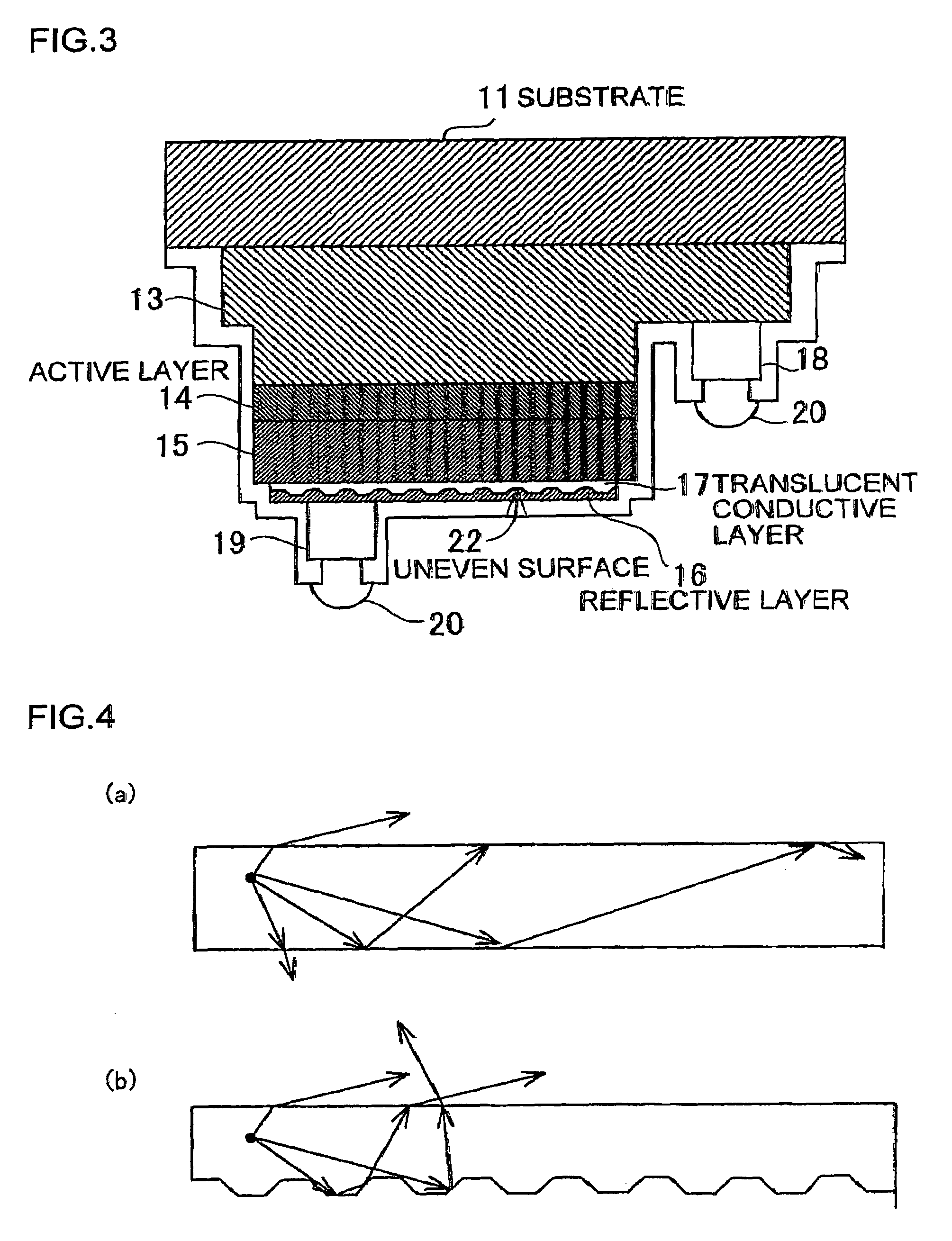Semiconductor element and manufacturing method for the same
a semiconductor element and manufacturing method technology, applied in the field of nitride semiconductor elements, can solve the problems of difficult ohmic contact with the electrode, high contact resistance in the electrode portion, and the problem of emitting element, so as to and increase the light emitting efficiency to the outside
- Summary
- Abstract
- Description
- Claims
- Application Information
AI Technical Summary
Benefits of technology
Problems solved by technology
Method used
Image
Examples
embodiment 1
[0045]An example on which a nitride semiconductor light emitting element according to one embodiment of the present invention is mounted is shown in the schematic cross-sectional diagram of FIG. 2. In this figure, an LED chip 9, which is a nitride semiconductor light emitting element, is mounted on a sub-mount 10, which is one type of circuit board, as a flip chip. A flip chip is used in a mounting system, which is referred to as face-down mounting, where the substrate 11 side that faces the surface on which the electrodes are formed is used as the main light emitting surface, unlike face-up mounting, where the surface on which the electrodes of the nitrite semiconductor layer acre formed is used as the main light emitting surface.
[0046]In an LED chip 9 of FIG. 2, a buffer layer 12, an n-type nitride semiconductor layer 13, an active layer 14 and a p-type nitride semiconductor layer 15 are epitaxially grown in sequence on a substrate 11, and furthermore, a translucent conductive lay...
embodiment 2
[0101]The semiconductor element according to another embodiment of the present invention is provided with: a substrate 11 which has a pair of main surfaces that face each other; a semiconductor layer of a first conductivity type on one of the main surfaces of the above described substrate 11; a semiconductor layer of a second conductivity type on the above described semiconductor layer of the first conductivity type; an active layer 14 formed between the above described semiconductor layer of the first conductivity type and the semiconductor layer of the second conductivity type; and a reflective layer 16 formed on the above described semiconductor layer of the second conductivity type for reflecting light from the above described active layer 14 toward the above described semiconductor layer of the second conductivity type.
[0102]This semiconductor element can be mounted on a circuit board as a light emitting element, with the other main surface of the above described substrate 11 b...
example 1
[0110]In the following, the examples according to the present invention are described in detail. Here, as Example 1, an LED which is a semiconductor light emitting element having the configuration shown in FIG. 3 is fabricated. First, an MOVPE reactive unit is used and a buffer layer made of GaN is grown in sequence so as to have a film thickness of 200 Angstroms, an n-type contact layer made of an Si doped n-type GaN is grown so as to have a film thickness of 4 μm, an active layer 14 having a single quantum well structure made of non-doped In0.2Ga0.8N so as to have a film thickness of 30 Angstroms, a p-type clad layer made of an Mg doped p-type Al0.1Ga0.9N so as to have a film thickness of 0.2 μm, and a p-type contact layer made of an Mg doped p-type GaN so as to have a film thickness of 0.5 μm, on a sapphire substrate 11 having a diameter of 2 inches.
[0111]Furthermore, annealing is carried out on the wafer in a reactor chamber in a nitrogen atmosphere at a temperature of 600° C., ...
PUM
| Property | Measurement | Unit |
|---|---|---|
| angle | aaaaa | aaaaa |
| thickness | aaaaa | aaaaa |
| band gap | aaaaa | aaaaa |
Abstract
Description
Claims
Application Information
 Login to View More
Login to View More - R&D
- Intellectual Property
- Life Sciences
- Materials
- Tech Scout
- Unparalleled Data Quality
- Higher Quality Content
- 60% Fewer Hallucinations
Browse by: Latest US Patents, China's latest patents, Technical Efficacy Thesaurus, Application Domain, Technology Topic, Popular Technical Reports.
© 2025 PatSnap. All rights reserved.Legal|Privacy policy|Modern Slavery Act Transparency Statement|Sitemap|About US| Contact US: help@patsnap.com



